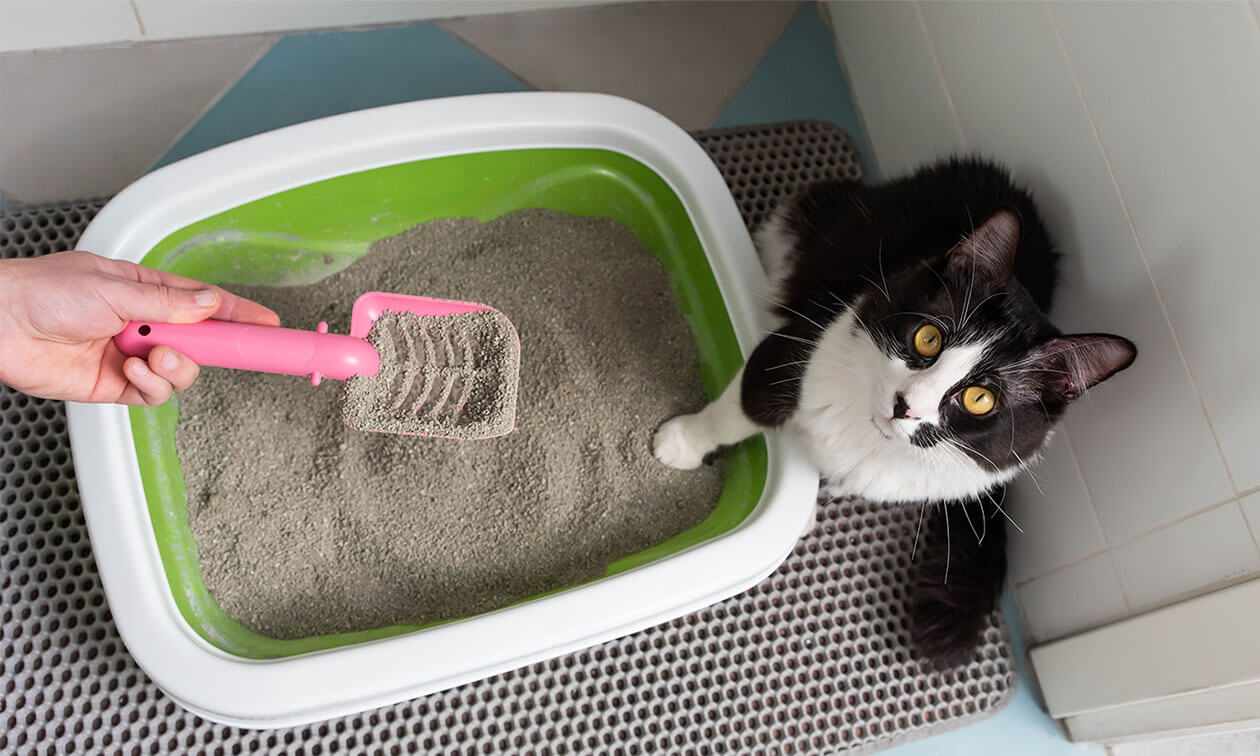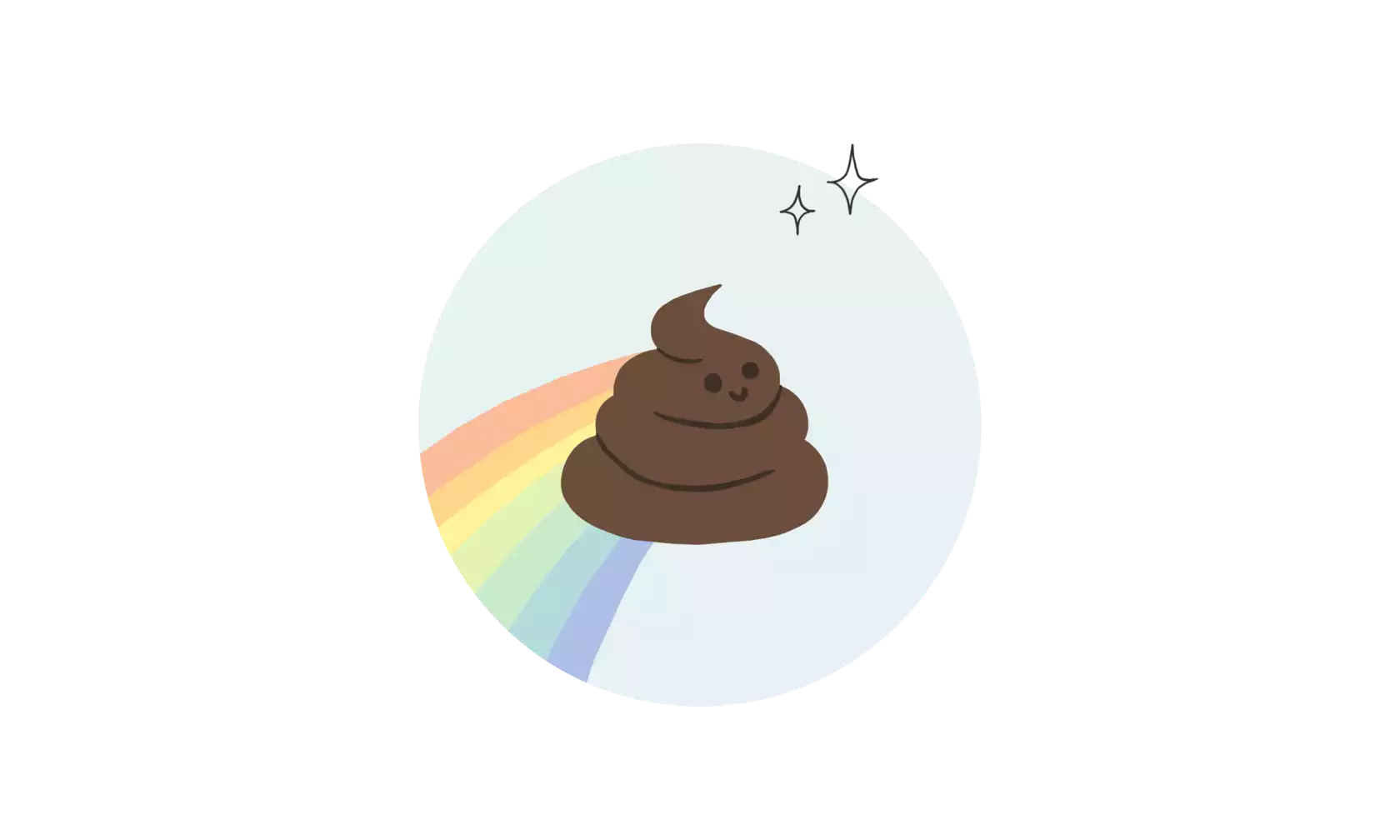None of us love cleaning the litter box, but that routine helps you understand what your cat's normal poop looks and smells like. This is important because changes to their normal poop patterns let you know there could be a medical issue, and a visit to the vet is needed.
What's "Normal" for Your Cat?
One of the best ways to catch health issues with your cat is to notice changes in their "normal", whether it's their eating and drinking habits, energy levels, comfort being handled, or a variety of other things – and that includes their poop.
Every cat's "normal" will be a bit different. That's why it's important to pay attention to things like their litter box habits, even the qualities of their poop, so you know when something is out of the ordinary.
What Should Cat Poop Look Like?
Since every cat’s “normal” is a little different, their feces will differ too. That said, signs of healthy cat poop include consistency, color, size, and smell. Similarly, signs of unhealthy cat poop can vary in any of these categories too. Learn more about all of them in the sections below.
Poop Consistency
The normal consistency of healthy cat poop should be a fully formed log that is firm yet pliable. Anything out of the ordinary means it's time to call your veterinarian.
- Too soft. If your cat's poop is softer than normal or not fully formed, but also not runny and loose, it's possible something didn't agree with their gastrointestinal tract, or they're feeling some stress and anxiety. If the soft poops continue for a few days in a row or come back from time to time, there could be a bigger health issue.
- Loose and runny. This is diarrhea and can have various causes, such as gastrointestinal issues, parasites, stress, or infection.
- Too firm. If your cat's poop appears dry and hard, they could be constipated or dehydrated. Constipation can be due to, lack of dietary fiber, anxiety, gastrointestinal issues, and more. It can be quite uncomfortable and even painful if left untreated. Dehydration can be due to not drinking enough or having a disease, such as kidney failure or diabetes.
- Thin and ribbon-like. If your cat's poop appears thin and ribbon-like, they could have an issue with their colon.
Poop Color
The normal color of cat poop is brown to dark brown. When their poop varies from this shade, it can be an indicator of an underlying health issue.
In some cases, a cat's diet can temporarily change the color of their poop. This is generally nothing to worry about as long as they appear healthy and are eating, drinking, and playful.
A single bowel movement with a little bit of red blood or a small amount of mucus is also generally not a concern as long as everything else about the poop is normal and your cat appears healthy.
If you notice your cat's poop color is persistently abnormal, it's important to seek veterinary care right away. Some poop colors of concern include:
- Black. If your cat's poop appears blackish (also referred to as 'tarry'), they could have bleeding within the gastrointestinal tract. See your veterinarian immediately since internal bleeding, in the upper part of the GI tract, can be life-threatening.
- Green. Green poop can indicate your cat is eating grass or plants. This can be their way of obtaining missing nutrients from their diet or might mean they have gastrointestinal upset, especially if they’re regularly trying to eat greenery and vomiting. Green poop can also indicate significant medical issues such as intestinal parasites, bacterial infections, liver or gallbladder issues, and digestive issues. Once again, it's time for a vet visit.
- Red. Poop that is red or streaked in red is always concerning as it can indicate lower gastrointestinal tract bleeding. Time to see your vet. Other causes of red poop include parasitism, change in diet, constipation that causes straining, inflammation of the colon, and infection.
A small amount of blood doesn't necessarily indicate a medical issue, especially if only once or twice. If your cat strained to poop or has a cut or abrasion around the anus, this could cause a small amount of blood to be streaked on the poop.
- Yellow or orange. This can indicate a serious medical issue with their liver or gallbladder, and prompt veterinary care is essential. Other potential causes include abdominal tumors, bile duct obstruction, or trauma to the abdomen.
- Grey. Grey cat poop, especially if greasy, can indicate liver or pancreatic issues. If the liver or pancreas isn't functioning normally, malabsorption of nutrients and issues digesting fats can affect the color of the stool.
Passing large amounts of mucus in the stool can also make it look grey. This could be inflammation in the gastrointestinal tract caused by parasites or illness.
- Light brown or tan. Poop of this color can indicate that your cat is not completely digesting their food. This can be a result of gastrointestinal, liver, or bile issues.
- White. While white poop isn't commonly seen in cats, it means an urgent trip to your vet if it happens. Your cat could have an obstruction along the bile duct system or liver dysfunction.
- White spots. White spots, like a grain of rice, on your cat's poop may indicate that your cat has tapeworms. Cats get tapeworms from ingesting fleas. Contact your veterinarian to have your cat evaluated for external and internal parasites.
Poop Size
The amount and size of your cat's poop is also something to watch.
- Frequency. On average, cats poop once or twice a day. If you notice a lot more poop or your cat hasn't pooped for two or more days, it is time to see the vet.
- More than normal. If your cat is pooping a large amount, especially if it's mushy or liquid, this can indicate several underlying medical issues, such as digestive issues, lack of dietary fiber, or stress.
- Small pebbles. If your cat's poop is small, like little pebbles, that is often a sign of constipation, which can have several causes.
If you notice any of these changes in the size and amount of your cat's poop, prompt treatment is essential.
Poop Smell
Healthy cat poop should not have an overpowering foul smell. If you notice it smells considerably worse than normal, your cat may have an underlying medical issue, such as digestive issues, intestinal parasites, an infection, or a poor diet.
Occasional smelly poop generally isn't a cause for concern. If the foul smell continues, is accompanied by any changes in color or consistency, or you notice other changes in your cat's behavior, have them evaluated by their veterinarian.
Monitoring your cat’s bathroom habits isn’t the most pleasant task, but it’s a reliable way to monitor their health. Noting any change from your cat’s norm helps keep them healthy and can help your vet determine what sort of medical issues your cat may be dealing with.
ZPC-03707



